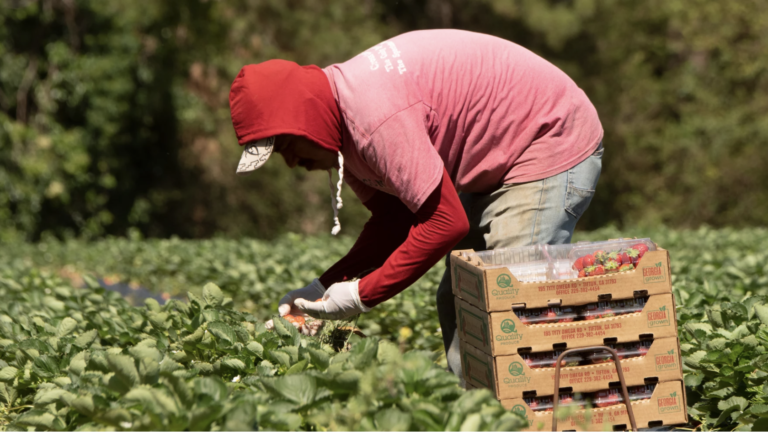Many ag industry and farmworker advocacy groups had high hopes that farm labor reform would make it through Congress last year. Now the future is murky.
Congress failed to pass immigration reform in December that would have provided a path to legal status for migrant farm workers and capped wages.
With a new GOP-led House of Representatives, experts say it’s unlikely to be revisited any time in the near future.
“It doesn’t look like there will be, at least in the next few years, any chances of anything happening legislatively,” said Daniel Costa, director of immigration law and policy research at the Economic Policy Institute.
The proposed legislation, first brought up under the Farm Workforce Modernization Act, had support from some farm worker advocates, unions, employers, and industry coalitions. The bipartisan bill passed the House of Representatives for the first time in 2019 and again last March but failed to get traction in the Senate.
In his new role as Speaker of the House, Kevin McCarthy said in his opening remarks to the 118th Congress that he planned to pass bills to address the “wide open southern borders.”
What didn’t happen
More than 300,000 workers performed agricultural jobs in the U.S. through H-2A visas last year. The key function of the program is to admit temporary agricultural workers into the country to make up for ongoing domestic labor shortages.
The proposal would have made a number of significant amendments to the H-2A visa program, including a years-long path to legal status for some migrant guest workers. It also would have added some longer term H-2A visas, established a mandatory verification system for all farm workers and improved access to housing for farm workers.
Kayla Argeropoulos with Legal Aid Society of Metropolitan Family Services said that the legislative proposal’s pathway still would have taken years.
“If a farm worker has been working in the U.S. for 10 years or less, then it would take eight years for them to obtain or apply for permanent residency here in the U.S.” she said.
James O’Neil with the American Business Immigration Coalition said that the pathway to legal status would have only applied to farm workers who were in the U.S. and could prove that they had been working in agriculture for a designated amount of time.
“This would not have become a magnet for newcomers to the United States, because it wouldn’t apply to them,” he said. “This would apply only to folks that were working in agriculture in the United States for the past two years.”
To qualify workers would have had to be undocumented, have no criminal record, and pass a background check. O’Neil adds that the documentation would have meant that farm workers could leave the U.S. to visit their families in their home countries and then returned at will.
Wage rates
The proposal also would have frozen farm worker pay for one year and then put a cap on how high wages could increase. One study found that the changes to farm worker wages would have saved employers over $2 billion in wages just two years after the bill’s implementation.
Because the Senate was unable to reach a consensus, O’Neil said consumers will suffer.
“And because it didn’t become law, you know, we expect that Americans will continue to pay more, their grocery bills will continue to skyrocket,” he said.
But Costa, with the Economic Policy Institute, said the bill would have effectively decoupled farm worker wages from market forces, even though they are already some of the lowest paid workers in the U.S.
“We’re relying on this underpaid and really vulnerable and exploitable workforce,” he said.
This story was produced in partnership with Harvest Public Media, a collaboration of public media newsrooms in the Midwest. It reports on food systems, agriculture and rural issues. Follow Harvest on Twitter: @HarvestPM
9(MDM5MjE5NTg1MDE1Mjk1MTM5NjlkMzI1ZQ000))

